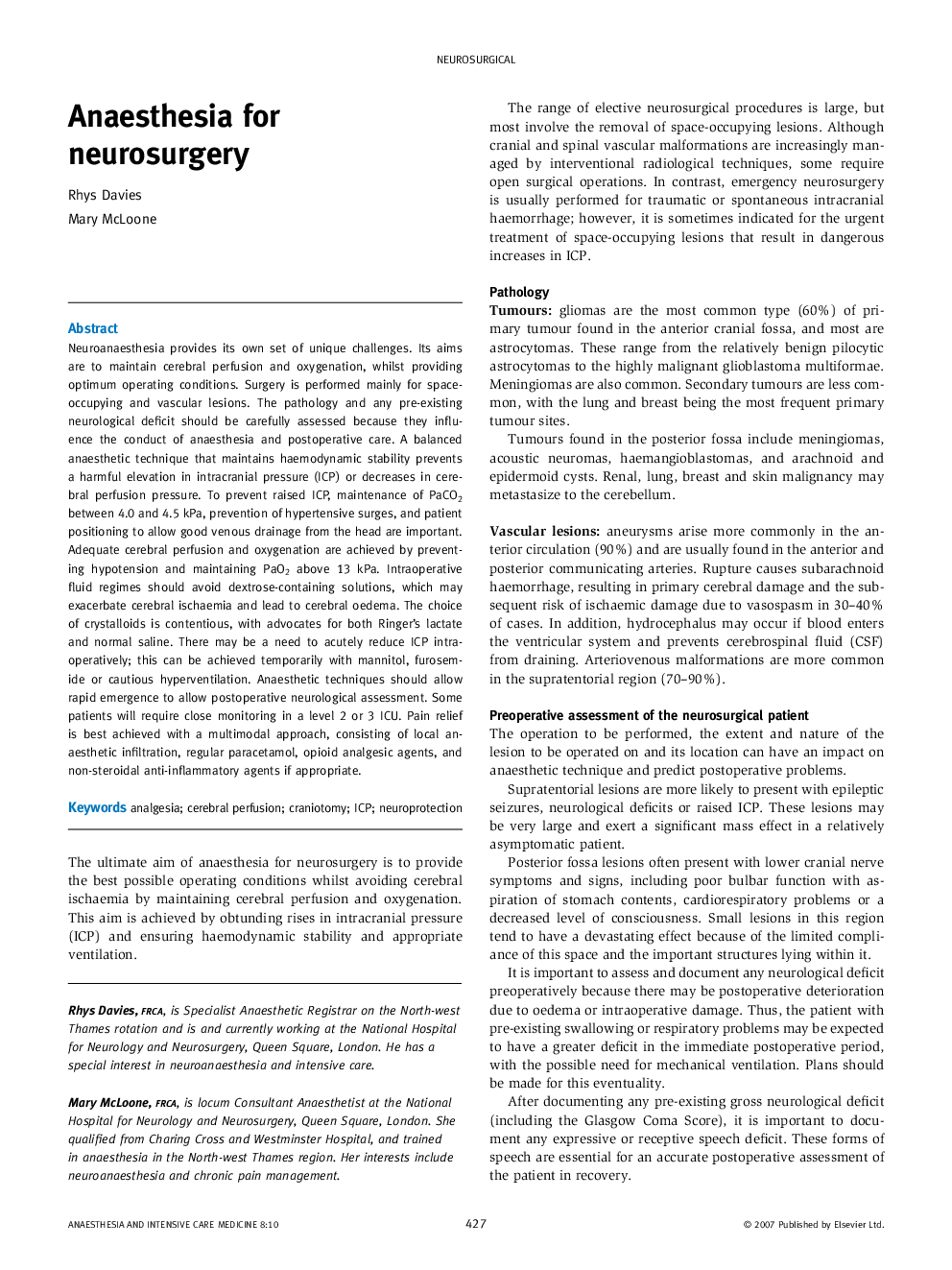| Article ID | Journal | Published Year | Pages | File Type |
|---|---|---|---|---|
| 2743596 | Anaesthesia & Intensive Care Medicine | 2007 | 4 Pages |
Neuroanaesthesia provides its own set of unique challenges. Its aims are to maintain cerebral perfusion and oxygenation, whilst providing optimum operating conditions. Surgery is performed mainly for space-occupying and vascular lesions. The pathology and any pre-existing neurological deficit should be carefully assessed because they influence the conduct of anaesthesia and postoperative care. A balanced anaesthetic technique that maintains haemodynamic stability prevents a harmful elevation in intracranial pressure (ICP) or decreases in cerebral perfusion pressure. To prevent raised ICP, maintenance of PaCO2 between 4.0 and 4.5 kPa, prevention of hypertensive surges, and patient positioning to allow good venous drainage from the head are important. Adequate cerebral perfusion and oxygenation are achieved by preventing hypotension and maintaining PaO2 above 13 kPa. Intraoperative fluid regimes should avoid dextrose-containing solutions, which may exacerbate cerebral ischaemia and lead to cerebral oedema. The choice of crystalloids is contentious, with advocates for both Ringer’s lactate and normal saline. There may be a need to acutely reduce ICP intraoperatively; this can be achieved temporarily with mannitol, furosemide or cautious hyperventilation. Anaesthetic techniques should allow rapid emergence to allow postoperative neurological assessment. Some patients will require close monitoring in a level 2 or 3 ICU. Pain relief is best achieved with a multimodal approach, consisting of local anaesthetic infiltration, regular paracetamol, opioid analgesic agents, and non-steroidal anti-inflammatory agents if appropriate.
